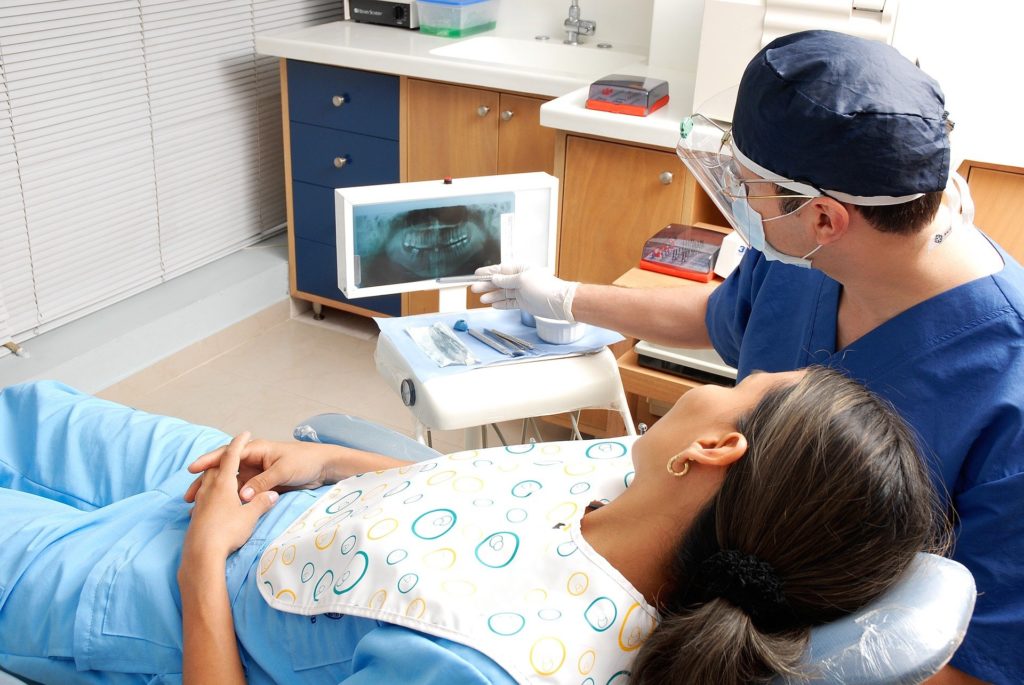No matter how careful we are, some infections are difficult to avoid. Our mouth is one of the most sensitive parts of our body. Anyone who has a mouth infection should get treatment immediately. Infected gums are not only painful but also brutal. They can lead to advanced periodontal disease. We will look at different gum disease treatment options that are available.
Table of Contents
What Are the Symptoms of Gum Disease?
Before we dive into gum disease treatment, it is crucial to understand the symptoms of gum disease. Even though serious gum infections are not as common, they can cause major issues if left untreated. If we do not take care of our teeth and gums, we can suffer from gum infection. The following signs indicate infected gums.
- When the gums become tender, bleed, or are swollen.
- Loose teeth.
- Chronic bad breath.
- Pus coming out of the gums.
- Receding gums.
- A change in the way the teeth fit whenever you bite.
Anyone who suffers from any of the abovementioned symptoms should consult with their dentist to determine just how severe the infection might be.
Gum Disease Treatment Options
Once the dentist has checked your gums and had concluded that you have gum disease, he or she would consider a few treatments based on the stage of the disease and your overall health. Let’s take a deeper look at the different treatment options that have been briefly explained on New York Total Dental’s website.
1. Non-Surgical Treatments
Consider the following non-surgical treatments for gum disease:
Professional Dental Cleaning
The dental hygienist or dentist would remove the tartar and plaque from below and above the gum line of your teeth during the check-up. Professional dental cleaning might be recommended more than twice a year by the dentist, depending on your condition. It is a very important preventive measure that helps ensure that the condition does not progress.
Scaling and Root Planing
Another non-surgical treatment option that is available is scaling and root planing. It is a deep-cleaning procedure which is done under a local anesthetic. The procedure involves the scraping away of plaque and tartar and scaling of rough spots to ensure that the tooth root is smooth. Bacteria are removed through the smoothing of the rough spots. Thus, a clean surface is provided for the gums to be reattached to your teeth.

2. Surgical Treatments
The following surgical treatments are available for treating gum disease.
Pocket Reduction Surgery/ Flap Surgery
The gums are lifted all the way back during the procedure to ensure that all the tartar is properly removed. Irregular surfaces of the bone that have been damaged are smoothed to ensure that the disease-causing bacteria have no place to hide. Then, the gums are placed for the tissue to fit around the teeth snugly. The size of the space between the tooth and gum is reducing during the procedure. Hence, the risk of serious health problems due to periodontal disease is minimized.
Bone Grafts
Bone grafts are a procedure wherein fragments of your bone, donated bone, or synthetic bone are used to replace the bone that has been destroyed by the disease. The grafts help function as a platform for bone regrowth. Thus, the stability of the teeth is restored. Due to technological developments, tissue engineering has become a reality. It encourages the reproduction of the bone and tissue at a fast rate.
Soft Tissue Grafts
The procedure involves the reinforcement of thin gums or the filling of places where the gums have already receded. Typically, the graft tissue is taken from the roof of your mouth. Then, it is stitched to the affected area.
Guided Tissue Regeneration
Guided tissue regeneration is a procedure wherein the bone that supports the teeth is simulated to grow gum tissue and bone. It is normally done along with flap surgery. Mesh-like fabric is inserted between the gum tissue and bone during the procedure. It ensures that the gum tissue does not grow into the bone area. Therefore, it allows the connective tissue and bone to regrow for providing better support to your teeth.
Bone Surgery
Finally, bone surgery involves smoothing shallow craters in the bone because of advanced or moderate bone loss. The bone around your teeth is reshaped after the flap surgery to decrease the crates. It helps make sure that bacteria do not grow and collect.
Which Procedure Is the Right Fit For You?
The dentist would decide which gum disease treatment procedure is the right fit for you, depending on the dental examination. A non-surgical procedure that consists of scaling and root planing is generally sufficient in most cases. For a professional opinion, make sure to get help from the orthodontist in Thousand Oaks.
Featured Image by Sammy-Williams from Pixabay




